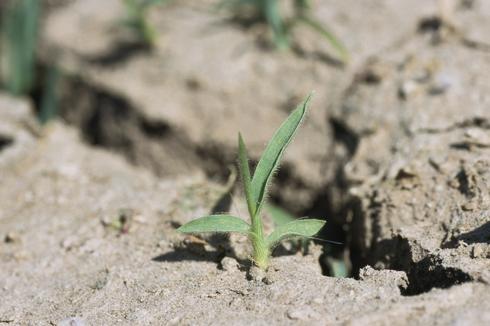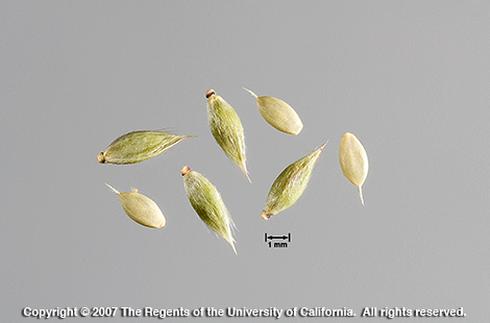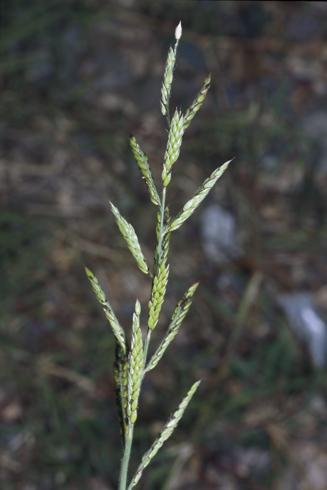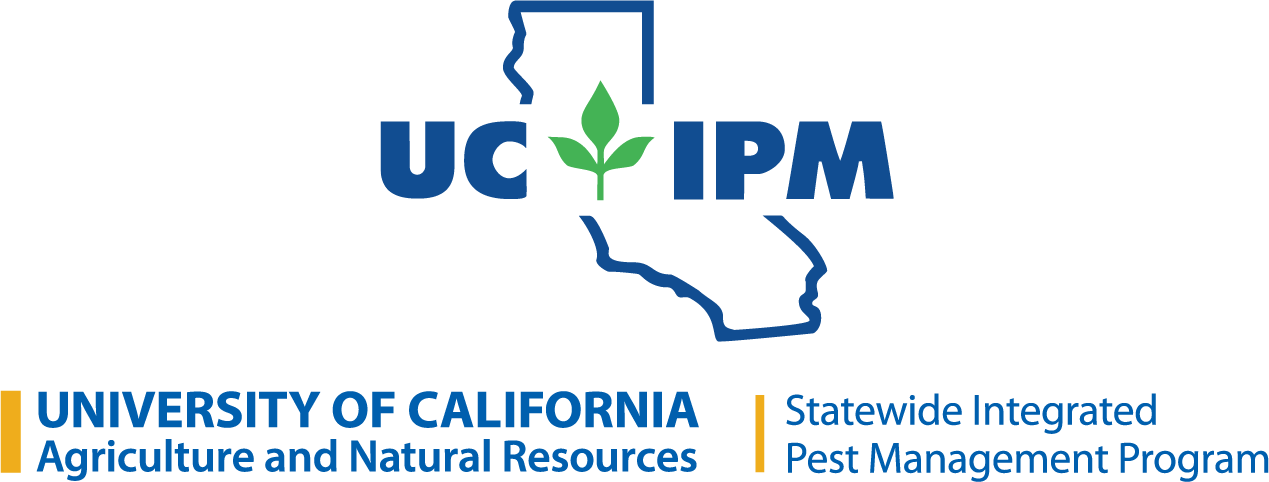Prairie cupgrass is a summer annual grass. In California, it inhabits agricultural land and other disturbed sites in the southern Sacramento Valley, northern San Joaquin Valley, southwestern region, and Sonoran Desert, up to 330 feet (about 100 m). Prairie cupgrass is often mistaken for southwestern cupgrass and barnyardgrass. In open areas without competition, prairie cupgrass stems can take on a somewhat spreading growth habit.
Habitat
Vegetable and agronomic crop fields, fallow fields, irrigated pastures, ditch banks, roadsides, and gardens.
Seedling
Prairie cupgrass is distinguished from southwestern cupgrass, Eriochloa acuminata, by the soft hairs on the leaf blade and leaf sheath.

Mature Plant
Several stems grow from the base of light grayish-green plants and stand 1 to 2 feet (30–60 cm) tall. Stem branching gives plants a bushy appearance. Generally, the leaves are not as broad as those of southwestern cupgrass.

Collar Region
The ligule is short and less prominent than that of southwestern cupgrass.

Reproduction
Reproduces by seed.

Flowers
Flowering takes place from June through November. The flower head has 1 to 2 inch (2.5–5 cm) branches. Spikelets are arranged in two rows on one side of each branch and dark, cuplike structures at the base of each spikelet are not as pronounced as in southwestern cupgrass. Another difference between the two grasses is that prairie cupgrass florets are tipped with a short needlike awn.

